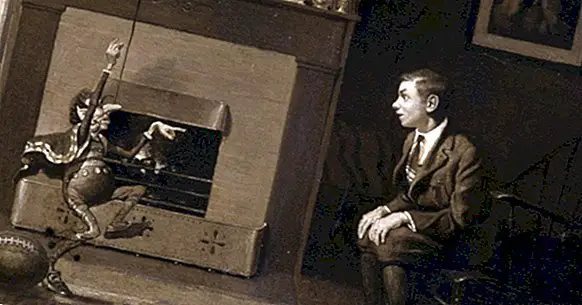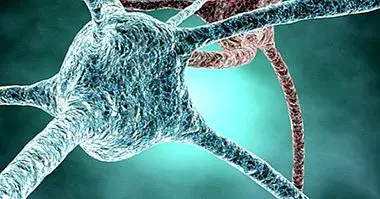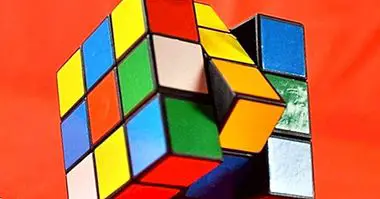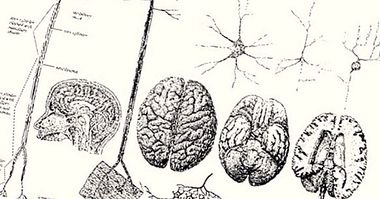Magical thinking: causes, functions and examples
Magical thinking has accompanied humanity since the beginning of time. We have a natural tendency to establish cause and effect relationships without checking them logically; This predisposition is very marked in childhood and it is maintained if the context in which we find ourselves promotes it, as has happened in many cultures.
In this article we will define magical thinking and explain what its causes and functions are , according to the existing literature. To finish we will expose some significant examples and contexts in which this type of reasoning appears on a regular basis.
- Related article: "The 9 types of thought and their characteristics"
What is magical thinking?
The concept "magical thinking" is used in psychology and anthropology to describe illogical attributions of causality that are made without empirical evidence , especially when the person believes that their thoughts can have consequences in the external world, either by their own action or by the intermediation of supernatural forces.
Magical thinking is present in the vast majority of cultures around the world. It is a natural process, probably with a biological basis similar to that of classical conditioning, by which we rely on similarity or temporal or spatial contiguity between elements, for example, to establish a non-demonstrable causal relationship between them.
Thus, a girl who believes that if she behaves badly the man in the bag will kidnap her is falling into this logical error. The same happens with the tribes that perform ritual dances to invoke the rain or with people who think that their wishes will be fulfilled if they light a candle and entrust themselves to a certain saint.
The belief that the mind has power over matter As if it were a separate entity instead of a consequence of it, it can be the basis of many cases of magical thinking. However, it is a concept with a very broad meaning, which is why it has been used to refer to very diverse processes.
- Related article: "Dualism in Psychology"
Causes and functions
Magical thinking has been attributed mainly to two facts: the contiguity between events (eg, "My father died because I wished him death the day before") and associative thinking, which consists of establishing relationships based on similarities. For example, the Mapuche believed that they would obtain the strength of their enemies if they ate their heart.
Authors such as Claude Lévi-Strauss or Thomas Markle have claimed that magical thinking has adaptive functions in certain circumstances . However, when it comes to attributing causes this type of reasoning tends to fail much more commonly than that based on empirical evidence.
One of the main functions of magical thinking is the reduction of anxiety. When people find themselves in a stressful situation that they can not resolve, it is easier for them to associate the reduction of anxiety with arbitrary elements in order to obtain a certain sense of control. For example, in agoraphobia the use of "amulets" is common.
Even in today's world, where we believe that logic predominates, magical thinking still has a significant presence and it is even useful at times. A good example is the placebo effect, whereby the very act of believing that a false remedy will be useful in curing a disease causes an improvement in symptoms.
Examples of magical thinking
We can find samples of magical thinking in a large number of everyday situations, although in some cases this type of reasoning can be a sign of pathology, particularly when beliefs occur in adulthood and are not shared by the environment.
1. Childish egocentrism
Between 2 and 7 years, during the preoperational stage described by Piaget , children believe that they can modify elements of the world with the mind, whether voluntarily or involuntarily. At this age, thinking is characterized by the difficulty to understand abstract concepts and by egocentricity, or inability to adopt the perspective of others.
These types of ideas appear more usually when the death of a loved one occurs; in these cases children tend to believe that they have been at fault in some way. However, arbitrary causal attributions and illogical thinking in general, favored by the lack of understanding of the world, are very typical in childhood.
Magical thinking is very common in children because it is consubstantial with human nature. As cognitive development progresses the frequency of this type of ideas is attenuated , at least in case the social context favors rational thinking; if this is not the case, magical beliefs can be passed on from generation to generation.
- Related article: "The 4 stages of Jean Piaget's cognitive development"
2. Superstition and supernatural thinking
Superstitions are beliefs without logical foundation or scientific evidence. They are a type of magical thought, although it is difficult to define what exactly constitutes a superstition; for example, religions do not tend to be seen as superstitions even though the only criterion that distinguishes them is that they are shared by many people.
As with magical thinking in general, superstitions are more common when people are in situations of stress. Thus, it is typical that those who do not firmly believe in the existence of gods but do not discard it altogether try to communicate with them when they are desperate.
Some superstitions and supernatural ideas are transmitted through culture. This has happened with innumerable myths throughout history, and it is also common for children to be made to believe that Santa Claus, the Magi or the Tooth Fairy exist. Constructos like fate and karma They are also good examples of magical thinking.
- Maybe you're interested: "Karma: what is it exactly?"
3. Obsessive-compulsive disorder
Sometimes the characteristic rituals of obsessive-compulsive disorder (OCD) can be classified as magical thinking. This is more frequent in cases in which the person is not aware that he has a disorder or exaggerates the realism of his convictions.
In particular, people with OCD often believe, or at least They're afraid that a misfortune may happen disproportionately serious if they do not perform the ritual; For example, someone who suffers from this disorder might think that if you drop a burning butt on the carpet your whole floor would burn in a matter of seconds.
4. Delusions and psychosis
Magical thinking often appears in delusions, whether or not they occur in the context of a spectrum disorder of schizophrenia . While in delusional disorder irrational beliefs tend to have a relatively credible structure, in the case of schizotypal disorder and, above all, paranoid schizophrenia beliefs are more bizarre.
- Related article: "The 12 most curious and shocking types of delusions"



















